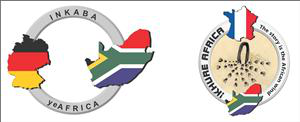Speaker
Prof.
Peter Booth
(Research Associate - NMMU)
Description
There are two phenomena that would have had a detrimental effect on natural gas contained in strata of the Ecca Group, in that at least some of the contained gas would have escaped, or at least been redistributed. These phenomena are (i) deformation features associated with the Cape Fold Belt (CFB) and, (ii) large scale intrusion of dolerites during the Mesozoic.
Deformation features of importance include faults, joints and, to a lesser extent, cleavages associated with folding during the Cape Orogeny. Normal faults are not that common in Karoo strata, but thrust faults are prevalent. The latter are ubiquitous in Cape Supergroup strata near the coast. However, recent studies have shown that this type of faulting extends northwards from the coast for some 300 km, and does affect Karoo strata. A deformation front therefore is defined between Matjiesfontein to Beaufort West, extending on to Fort Beaufort, and then onwards towards East London.
Seismic surveys conducted by Stankiewiscz and Lindeque in the southern part of the Karoo Basin confirm the presence of thrust faults that transect and displace Cape and Karoo strata, right up to the frontal zones of deformation near Beaufort West. These surveys show that gas-bearing strata of the Whitehill Formation are disrupted, thus providing escape channelways for redistribution of gas in these and overlying horizons. It remains yet to be quantified to what extent these faults have caused redistribution and escape of gas originally contained in lower Karoo horizons. There is therefore a need for petrophysical studies of fault zones to be conducted, particularly in this fontal region of the CFB, to arrive at some quantification of results.
The effect of dolerite dykes that have intruded gas bearing strata and effectively driven off gas in lower Karoo rocks would probably not be as great as those of sills and sheets of dolerite (e.g. Thabankulu), where heat from the larger igneous bodies would be more widespread. The latter intrusions would more effectively have driven off the gas from the host rocks (Whitehill Formation). In a best case scenario, exploration for gasfields north of the escarpment may be favourably pursued, albeit in smaller segments of the Karoo .
Primary author
Prof.
Peter Booth
(Research Associate - NMMU)

